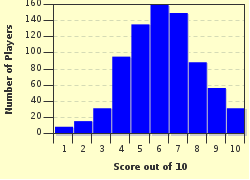Quiz Answer Key and Fun Facts
1. The primary function of the respiratory system is gas exchange, but it also involved in speech and smell. Which part of the respiratory system does air pass over to give rise to our sense of smell?
2. The respiratory system has two functional parts: a conducting portion and a respiratory portion. The conducting portion transports inspired air, but what is its other function?
3. The larynx is located superior to (above) the pharynx.
4. What do secondary bronchi lead to?
5. The upper respiratory tract contains the nasal cavity, pharynx, larynx and the trachea.
6. The respiratory system has a strong link to which other system in the body?
7. The human body has dual circulation: systemic circulation and pulmonary circulation. What does pulmonary circulation transport?
8. What difference is there between pulmonary arteries and other arteries in the body?
9. Intercostal muscles are located between ribs, and when they contract they elevate the ribs meaning more air can get into the lungs. Which of these is NOT a type of intercostal muscle?
10. The diaphragm is higher on the right side.
Source: Author
Milky1989
This quiz was reviewed by FunTrivia editor
crisw before going online.
Any errors found in FunTrivia content are routinely corrected through our feedback system.


